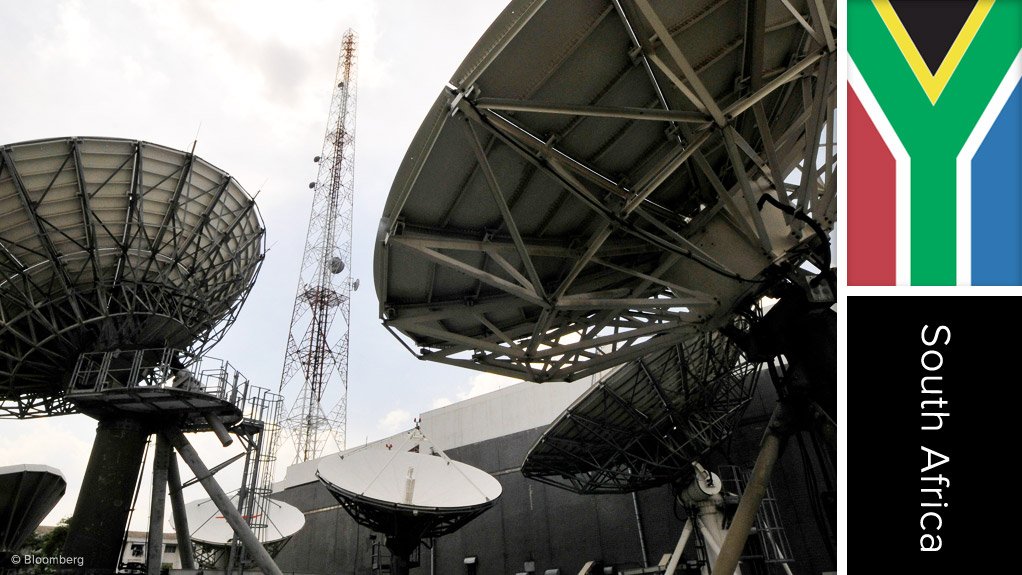Digital broadcasting migration project, South Africa
Name of the Project
Digital broadcasting migration project.
Location
South Africa.
Client
The Department of Communications (DoC).
Project Description
Digital terrestrial television (DTT) is the implementation of digital technology to provide more channels and/or better picture quality and sound using a conventional television antenna or aerial, instead of a satellite dish or cable connection.
In 2005, State-owned enterprise Sentech announced its plans to roll out DTT using digital video broadcasting terrestrial (DVB-T) technology, in time for the 2010 FIFA World Cup.
Initially, there will be two DVB-T transmitters for each location or site.
The first phase of the project involves upgrading the Sentech broadcast network and duplicating the current analogue network channels on a digital system.
Most of the 220 sites needed to broadcast DTT to 92% of South Africa's population are in place, but have to be upgraded to become fully digital. Once that process has been completed, DTT and analogue systems will run simultaneously (a dual-illumination process) until South Africa is ready to switch off analogue transmission. This decision will be made by government.
Consumers will require a set-top box (STB) to decode the signal, even for public broadcasting and free-to-air channels. The STBs are expected to be subsidised.
Once the migration to DTT is complete, the country will no longer have exclusive use of the frequencies.
Potential Job Creation
Not stated.
Value
About R10-billion has been spent on the project to date, which, besides the STBs includes the accumulation of infrastructure build, distributions, installations and public awareness programmes, besides others.
Duration
The project is ongoing.
Latest Developments
The DoC will continue to distribute the remaining STBs it has procured distributed ahead of the implementation of the new broadcasting digital migration model in March next year, using the old delivery model until decoder depletion.
“The new delivery model . . . will be phased in from March next year, but it does not make the already procured decoders obsolete or nonusable,” Communications Minister Nomvula Mokonyane has assured, noting that the new model will also continue to subsidise indigent television-viewing households.
Cabinet recently approved a revised digital migration delivery model that will result in government is stepping back from its involvement in the procurement of STBs, as well as the warehousing, transportation and installation of the decoders.
The new model for the implementation of the broadcast digital migration project adopts a market/retail-driven approach through collaboration and partnerships with the private sector and industry.
“Government will then rightfully fulfil its role of providing policy certainty and oversight to create an enabling environment,” Mokonyane has explained, pointing out that the registration and installation of government decoders and the roll-out of the project will continue unhindered until the new delivery model is phased in next year.
Neither of the R10-billion in expenditure or procurements undertaken to date will go to waste nor has it all been spent solely on the decoders, the DoC has said.
State-owned Universal Service and Access Agency of South Africa (Usaasa) has spent R938.4-million – R603.4-million on the procurement of 880 128 STBs and R334.9-million on antennas and satellite dishes.
Usaasa had an allocation of R2.3-billion for one-million DTT STBs, 500 000 direct-to-home (DTH) STBs, one-million antennas and 500 000 satellite dishes, Usaasa CEO Lumko Mtimde has said.
During the Phase 1 implementation stage of the project, the entity placed an order for 1.5-million STBs, with 880 128 STBs delivered to the South African Post Office (Sapo).
About 486 077 STBs have been installed at the subsidised beneficiaries, while the balance remains stored in Sapo warehouses, barring a few in transit, through installers, to the beneficiaries.
Bulk installations are being rolled out in the Free State, Northern Cape and North West.
Key Contracts and Suppliers
None stated.
On Budget and on Time?
After years of delay, the DTT project remains beset with numerous challenges inhibiting the full transition from analogue to digital broadcasting.
Contact Details for Project Information
DoC, Mish Molakeng, cell +27 82 469 3997.
Sentech, tel +27 11 691 7000.
Comments
Press Office
Announcements
What's On
Subscribe to improve your user experience...
Option 1 (equivalent of R125 a month):
Receive a weekly copy of Creamer Media's Engineering News & Mining Weekly magazine
(print copy for those in South Africa and e-magazine for those outside of South Africa)
Receive daily email newsletters
Access to full search results
Access archive of magazine back copies
Access to Projects in Progress
Access to ONE Research Report of your choice in PDF format
Option 2 (equivalent of R375 a month):
All benefits from Option 1
PLUS
Access to Creamer Media's Research Channel Africa for ALL Research Reports, in PDF format, on various industrial and mining sectors
including Electricity; Water; Energy Transition; Hydrogen; Roads, Rail and Ports; Coal; Gold; Platinum; Battery Metals; etc.
Already a subscriber?
Forgotten your password?
Receive weekly copy of Creamer Media's Engineering News & Mining Weekly magazine (print copy for those in South Africa and e-magazine for those outside of South Africa)
➕
Recieve daily email newsletters
➕
Access to full search results
➕
Access archive of magazine back copies
➕
Access to Projects in Progress
➕
Access to ONE Research Report of your choice in PDF format
RESEARCH CHANNEL AFRICA
R4500 (equivalent of R375 a month)
SUBSCRIBEAll benefits from Option 1
➕
Access to Creamer Media's Research Channel Africa for ALL Research Reports on various industrial and mining sectors, in PDF format, including on:
Electricity
➕
Water
➕
Energy Transition
➕
Hydrogen
➕
Roads, Rail and Ports
➕
Coal
➕
Gold
➕
Platinum
➕
Battery Metals
➕
etc.
Receive all benefits from Option 1 or Option 2 delivered to numerous people at your company
➕
Multiple User names and Passwords for simultaneous log-ins
➕
Intranet integration access to all in your organisation





















